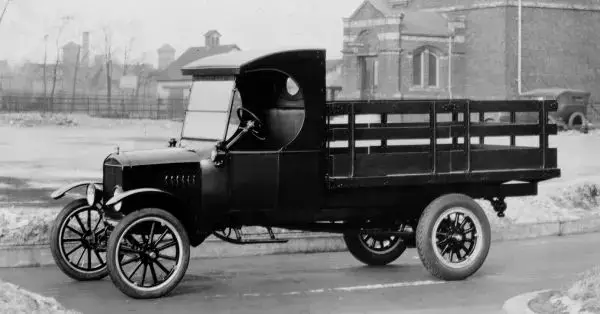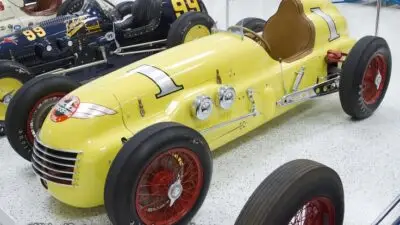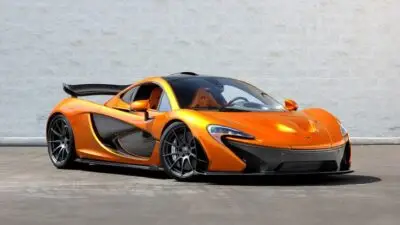The pickup truck stands as an iconic symbol of American automotive innovation, evolving from humble work vehicles to versatile lifestyle machines. The journey began in 1896 with Gottlieb Daimler’s first internal combustion truck, but America truly embraced this vehicle type when Ford introduced the Model TT in 1917, creating what many consider the first American pickup.
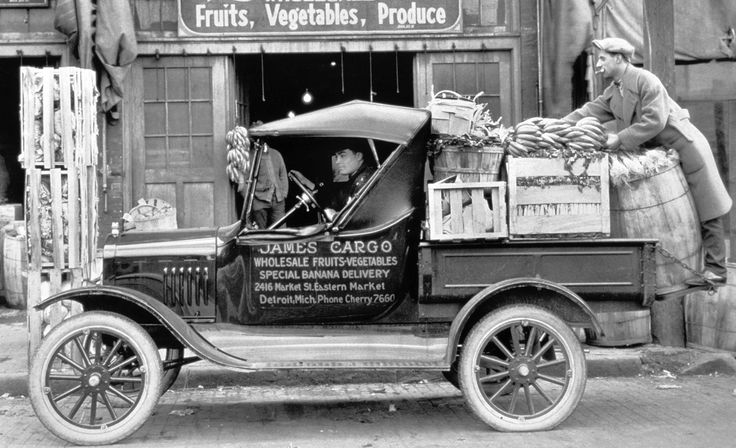
The evolution of pickup trucks over the past century reveals how these vehicles transformed from simple utilitarian farm tools into sophisticated machines that blend practicality with luxury while maintaining their rugged American spirit.

What started as basic hauling vehicles with open cargo areas has developed into diverse vehicle options with advanced technology and impressive capabilities. Modern trucks feature sleek aerodynamic designs for better fuel efficiency while maintaining the core functionality that made them essential to American work and life. The pickup’s journey from rear-engine hay wagons to today’s high-tech trucks shows both technical innovation and cultural adaptation.
Key Takeaways
- Pickup trucks evolved from simple work vehicles in the early 1900s to versatile machines that now blend utility with comfort and technology.
- Ford’s Model TT in 1917 marked the beginning of America’s long relationship with pickup trucks that would shape both industry and culture.
- Pickup truck design has continuously balanced practical functionality with technological advancement, reflecting changing American needs and values.
The Birth of the Pickup Truck

American pickup trucks began as practical solutions for farmers and business owners who needed vehicles that could haul goods. These early trucks transformed transportation and business operations in the early 20th century.
From Horse Carriages to the Model T
Before trucks existed, people relied on horse-drawn carriages to transport goods. This method was slow and limited by the stamina of horses. Everything changed in 1908 when Henry Ford introduced the Model T automobile.
The Model T revolutionized transportation with its affordable price of $825 (about $26,000 today). Many farmers and business owners quickly saw potential beyond just passenger travel.
Creative Americans began modifying their Model Ts by cutting away the back half of the passenger compartment. They attached wooden beds where the back seat had been. These homemade conversions became the first pickup trucks.
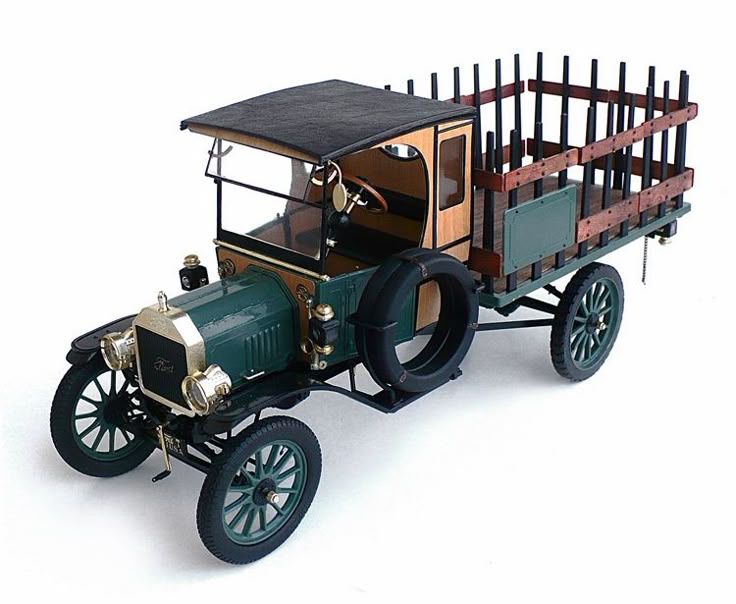
The modifications let owners haul tools, produce, and merchandise while still enjoying the speed and convenience of an automobile.
Ford Model T Runabout with Pickup Body
Henry Ford recognized the growing trend of Model T modifications and saw a business opportunity. In 1925, Ford introduced the first factory-built pickup truck – the Ford Model T Runabout with Pickup Body.
This vehicle featured:
- Factory-installed steel pickup bed
- Tailgate for easier loading and unloading
- Price of $281 (approximately $4,600 today)
- Capacity for up to 1,000 pounds of cargo
The Runabout with Pickup Body offered significant advantages over homemade conversions. It provided better durability, safety, and a professional appearance.
The truck’s success was immediate. Farmers, contractors, and delivery services quickly adopted this practical vehicle. Ford’s innovation established the foundation for what would become America’s most iconic vehicle type.
Technological Advancements and Innovation

Pickup trucks have undergone remarkable technological transformations since their inception, evolving from basic work vehicles to sophisticated machines packed with advanced features. These innovations have revolutionized performance, comfort, and environmental impact.
Introduction of the V8 Engine
The V8 engine marked a pivotal moment in pickup truck history. Ford introduced the first V8 engine in trucks during the 1930s, bringing unprecedented power to everyday work vehicles. This technological advancement transformed trucks from purely utilitarian vehicles into more versatile machines.
The V8 configuration offered several advantages over inline engines, including smoother operation and more compact design. Throughout the 1940s and 1950s, manufacturers refined these engines, improving reliability and performance.
By the 1960s, V8 engines had become standard offerings in full-size pickups from Ford, Chevrolet, and Dodge. These engines provided the torque needed for hauling and towing while delivering reasonable fuel economy for the era.
Evolution of Horsepower in Pickup Trucks
Horsepower ratings have climbed dramatically over decades. In the 1950s, pickup trucks typically produced between 100-200 horsepower. By the 1990s, standard trucks were delivering 200-300 horsepower.
The early 2000s saw a horsepower race among manufacturers, with models like the Ford F-150 Lightning and Dodge Ram SRT-10 pushing boundaries. These performance-oriented trucks achieved outputs exceeding 500 horsepower, previously unheard of in pickup segments.


Modern trucks have balanced power with efficiency. Today’s advanced engines deliver impressive horsepower while incorporating technologies like:
- Variable valve timing
- Direct injection
- Cylinder deactivation
- Turbocharging
Current top-tier trucks routinely offer 400+ horsepower while achieving better fuel economy than their predecessors with half the power.
The Shift to Eco-Friendly Models
The 2020s have marked the beginning of a significant transition toward electrified pickup trucks. This shift represents the most dramatic technological revolution in the segment’s history.
The GMC Hummer EV debuted with up to 1,000 horsepower and innovative features like “crab walk” diagonal steering. Tesla’s Cybertruck challenges conventional design while promising exceptional performance and range.
Traditional manufacturers haven’t been left behind. Ford’s F-150 Lightning translates America’s bestselling vehicle into an electric platform with practical innovations like bidirectional charging that can power homes during outages.
Hybrid options have also gained traction. The Ford F-150 PowerBoost and Toyota Tundra hybrid models bridge the gap between conventional and fully electric trucks.
These eco-friendly trucks maintain or exceed the capability of their combustion counterparts while dramatically reducing emissions. They represent the future direction of the pickup segment.
Cultural Impact and American Lifestyle

Pickup trucks have evolved beyond mere utility vehicles to become powerful symbols in American society. They represent core values like hard work, freedom, and self-reliance while simultaneously serving as status symbols across diverse communities.
Pickup Trucks in American Culture
The pickup truck stands as a quintessential symbol of American identity. What began as a practical workhorse has transformed into a cultural icon reflecting the changing landscape of American life. These vehicles represent more than transportation—they embody values deeply ingrained in American culture.
In rural America, pickup trucks remain essential tools for daily work and living. They handle farm tasks, tow equipment, and navigate difficult terrain with ease.
In suburban and urban settings, trucks have taken on new meaning. They symbolize adventure, outdoor lifestyles, and readiness for weekend escapes. The rise of trucks touches on broader themes about American identity itself.
Country music, film, and advertising frequently feature pickup trucks, cementing their place in American cultural expression. They appear in everything from music videos to political campaigns as symbols of authenticity and American values.
Iconic Vehicles and Their Role in Society
Several pickup truck models have achieved legendary status in American consciousness. The Ford F-150, Chevrolet Silverado, and Dodge Ram have become household names, each with devoted followings and cultural significance beyond their mechanical specifications.
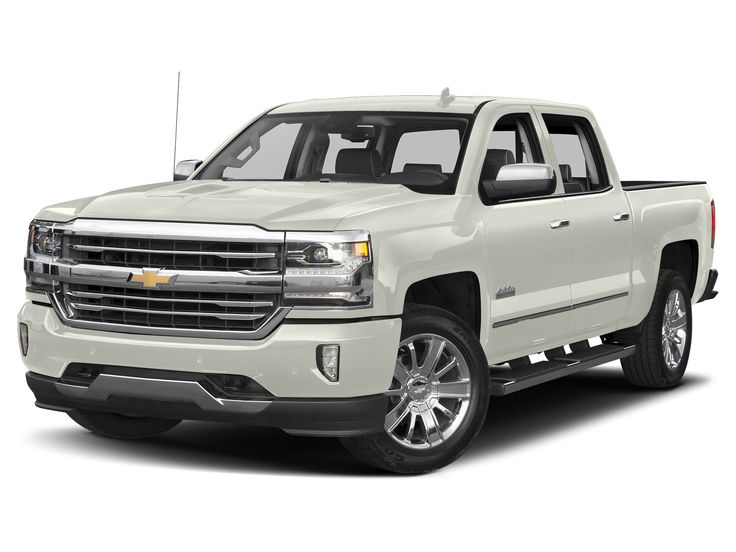
These iconic vehicles have transformed from “rusty rattletraps” to sophisticated machines that simultaneously flaunt practicality and luxury. Modern trucks often feature leather interiors and advanced technology alongside rugged capabilities.
Pickup trucks play multiple roles in society:
- Work vehicles for contractors, farmers, and tradespeople
- Family transportation with spacious cabins for passengers
- Status symbols displaying success and lifestyle choices
- Recreational vehicles enabling outdoor activities
The evolution of truck design reflects changing American priorities. Larger cabs, improved fuel efficiency, and luxury features demonstrate how trucks shape the way Americans live, work, and connect.
In many communities, pickup truck preferences can signal political affiliations, occupational status, and regional identity. These vehicles are not just transportation—they’re statements about who we are as Americans.
Functional Design and Utility

Pickup trucks evolved from pure work vehicles into versatile machines that balance rugged capability with practical features. Their designs directly reflect the needs of workers across various industries while incorporating technological advancements.
Pickup Trucks as Utility Vehicles
The fundamental design of pickup trucks centers around their ability to serve as utility vehicles. The open cargo bed represents the most distinctive feature, allowing for transportation of large items and materials.
Early pickup designs focused exclusively on function. They featured minimalist cabs, sturdy frames, and high ground clearance for navigating rough terrain.
Heavy-duty models like the Ford F-250 and F-350 expanded functional capabilities with:
- Higher payload capacities
- Enhanced towing ratings
- Reinforced frames and suspensions
- Larger bed dimensions
Modern utility features now include innovative storage solutions such as:
- Under-bed compartments
- Integrated toolboxes
- Configurable tie-down points
- Tailgate steps and integrated work surfaces
Features Tailored for Construction Sites
Pickup trucks designed for construction sites incorporate specialized elements that enhance productivity and durability. These vehicles face harsh conditions daily, requiring robust engineering solutions.
Key construction-focused features include:
- Reinforced beds with scratch-resistant coatings
- Integrated power outlets (120V/240V) for tools
- Enhanced lighting systems for nighttime work
- Heavy-duty suspension systems for carrying materials
The F-250 and F-350 Super Duty trucks excel in construction environments with their available upfitter switches, allowing easy installation of aftermarket equipment like winches and auxiliary lights.
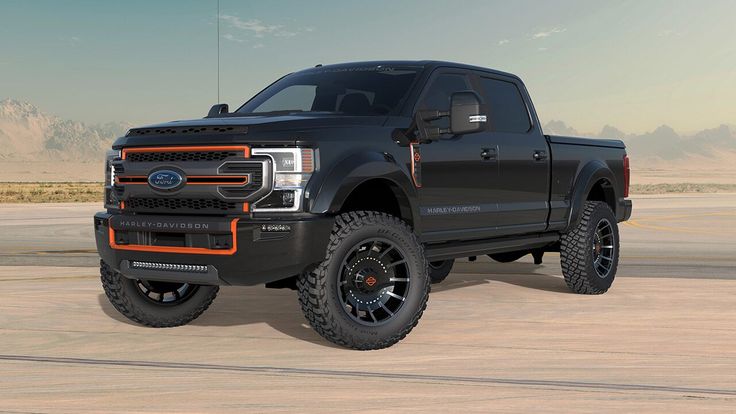
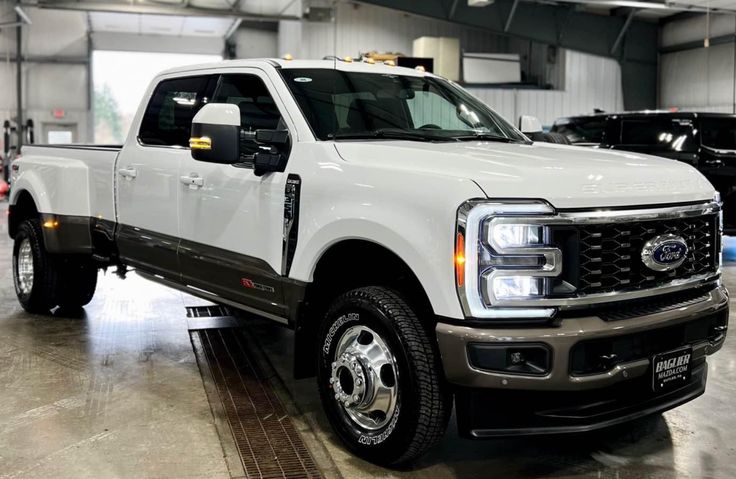
Manufacturer improvements now blend utility with comfort features. Even work-oriented trucks often include heated seats and climate control, recognizing that construction professionals spend significant time in their vehicles.
Bed accessories have evolved significantly with specialized racks for ladders, lumber, and pipes that can be customized based on specific trade requirements.
Notable Models Throughout History

American pickup trucks have evolved dramatically since their introduction, with several standout models defining each era of development. These iconic vehicles shaped both the industry and American culture through innovative designs and features.
The Ford F-Series
The Ford F-Series began its legendary run in 1948, replacing the previous Ford trucks including the Model TT which debuted in 1917. The first-generation F-Series introduced the now-familiar naming convention with the F-1 (half-ton), F-2, and F-3 models.
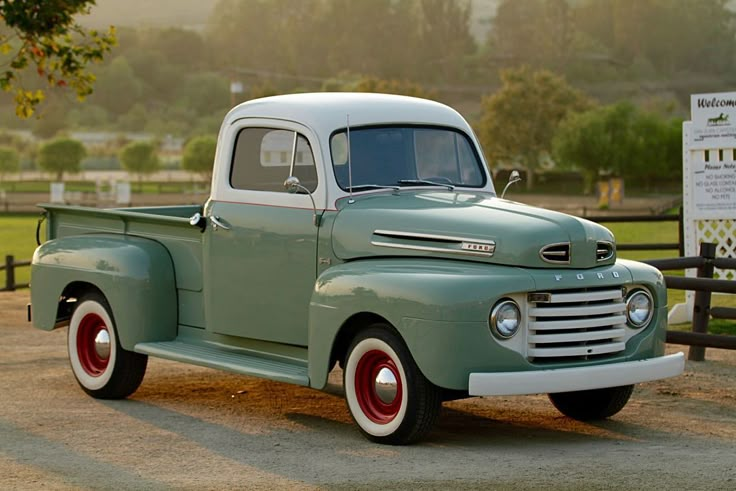
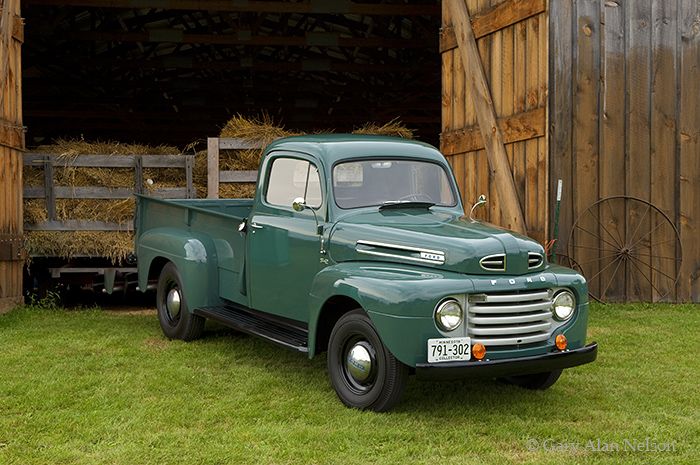
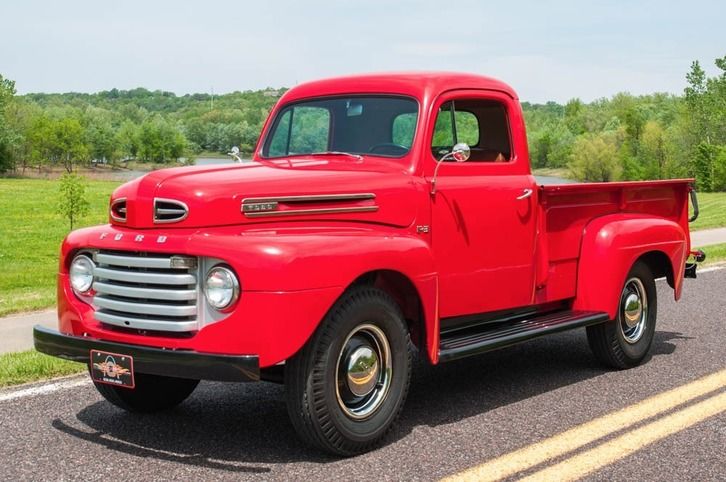
In 1953, Ford released the second-generation F-Series, renaming the F-1 to the F-100, which became an instant classic with its more modern design and improved comfort features. This period established Ford’s dominance in the truck market.
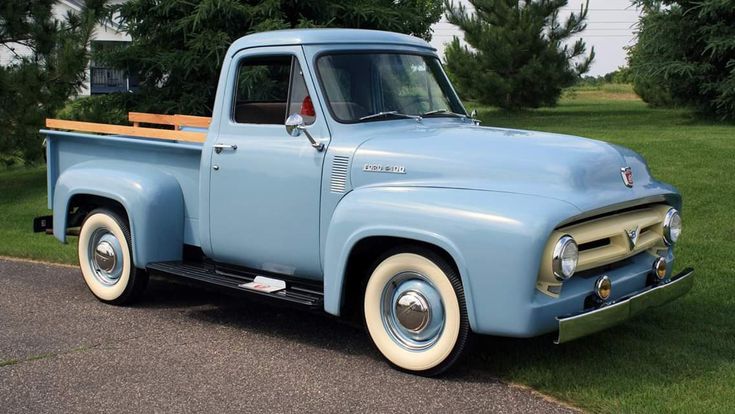
The F-Series truly revolutionized the industry in the 1970s by introducing features that appealed to both work and personal use. Models like the F-150, introduced in 1975, bridged the gap between light and heavy-duty trucks.
By the 1990s, the F-Series had evolved into more luxurious vehicles with extended cab options, cementing its status as America’s best-selling vehicle—a title it has held for over four decades.
Chevrolet’s C-Series and Its Evolution
Chevrolet’s entry into the modern pickup era came with its Task Force series in the mid-1950s, which later evolved into the C-Series trucks. The C10, introduced in the 1960s, became particularly notable for its clean design and improved ride quality.
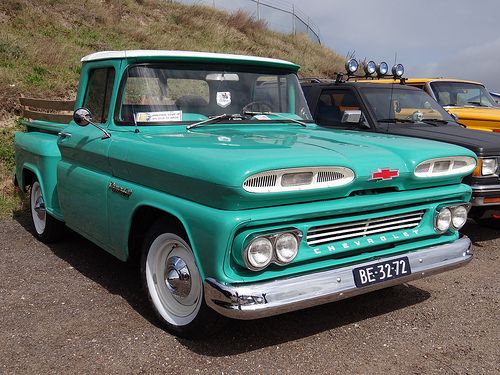
The C/K series (C for two-wheel drive, K for four-wheel drive) represented a significant leap forward with its 1967 redesign. These trucks featured improved chassis design and more car-like amenities that appealed to a broader customer base.
In 1973, Chevy released the square-body generation, which ran until 1987. These highly customizable trucks gained enormous popularity among enthusiasts for their durability and straightforward design.
Chevrolet’s evolutionary approach culminated in the Silverado, which replaced the C/K series in 1999. This transition marked Chevy’s move toward more refined, feature-rich trucks while maintaining their workhorse capabilities.
Dodge Ram: A Story of Persistence and Change
The Dodge Ram underwent perhaps the most dramatic transformation among American pickup brands. Early Dodge trucks established a reputation for durability, but they lagged behind Ford and Chevrolet in sales through most of the 20th century.
In 1981, Dodge adopted the Ram name across its truck lineup, but the true revolution came in 1994. The second-generation Ram introduced the “big rig” styling with its distinctive grille and hood design that completely changed the pickup truck aesthetic landscape.
This bold redesign tripled Ram sales almost overnight and forced competitors to reconsider their designs. The gamble paid off significantly as Ram trucks began garnering industry awards.
By the early 2000s, Ram trucks introduced innovations like the HEMI V8 engine and later the coil-spring rear suspension in 2009, offering superior ride quality. In 2010, Ram became its own brand separate from Dodge, signaling its importance in the company portfolio.
The Future of Pickup Trucks

Pickup trucks are entering a revolutionary phase with electric models disrupting traditional markets and innovative features reshaping driver expectations.
Electric Trucks and the Changing Landscape
The pickup truck market is experiencing a dramatic shift toward electrification. Traditional manufacturers and newcomers alike are racing to release electric trucks with impressive capabilities.
The Tesla Cybertruck has generated massive interest with its futuristic stainless steel exterior and claimed performance specs. Despite production delays, it represents a bold departure from conventional truck design.
Meanwhile, the GMC Hummer EV has transformed the gas-guzzling Hummer into an electric powerhouse with features like Crab Walk and Extract Mode.
Ford’s F-150 Lightning brings electrification to America’s best-selling vehicle, offering practical innovations like power-backup capabilities for homes during outages.
These electric trucks offer benefits traditional pickups can’t match:
- Zero emissions driving
- Lower operating costs
- Faster acceleration
- Additional storage (front trunks)
- Power export functionality
What Comes Next? Predicting Continual Innovation
The evolution of pickup trucks continues beyond just electrification. Manufacturers are exploring autonomous driving technologies that could revolutionize work vehicles.
Advanced driver assistance systems like trailer-specific backup assistance and enhanced safety features are becoming standard. These technologies make trucks more accessible to casual drivers while maintaining their utility.
Connectivity options are expanding rapidly. Modern trucks feature smartphone integration, over-the-air updates, and cabin tech that rivals luxury vehicles.
Materials science advances will likely produce trucks with stronger, lighter frames. Carbon fiber components and high-strength aluminum alloys improve fuel efficiency while maintaining durability.
The truck market’s enormous profitability ($11+ million in sales by 2017) ensures manufacturers will continue investing heavily in innovation. As environmental regulations tighten globally, expect hydrogen fuel cell technology to emerge as another alternative power source for future heavy-duty models.
Frequently Asked Questions

American pickup trucks have evolved dramatically from homemade cargo boxes on early cars to today’s high-tech vehicles. These transformations reflect changing consumer needs, technological advancements, and cultural shifts throughout American history.
What are the origins and history of American pickup trucks?
The first American pickup trucks emerged almost simultaneously with automobiles in the early 20th century. Initially, they were homemade vehicles created by farmers who attached cargo boxes to the rear ends of their cars.
These early modifications served practical needs for transporting goods and equipment on farms and in small businesses. The utility and versatility of these vehicles quickly caught the attention of automobile manufacturers.
By the 1920s, major automakers began producing factory-built pickup trucks to meet growing demand from rural Americans and businesses needing reliable transportation for goods.
Which brand produced the first American pickup truck?
Ford is widely credited with creating the first factory-produced American pickup truck. The Ford Model T Runabout with Pickup Body was introduced in 1925, marking the beginning of commercial pickup truck production.
Henry Ford recognized the potential market for these utility vehicles after seeing many Model T cars modified with cargo beds. The company’s decision to manufacture pickup trucks directly from the factory standardized the design and made them more accessible.
Other manufacturers like Chevrolet and Dodge soon followed Ford’s lead, creating their own pickup truck models to compete in this emerging market segment.
How did the design and features of American pickup trucks evolve over the years?
Early pickup trucks featured simple wooden beds attached to car chassis with minimal comfort features. The 1930s brought all-steel construction, improved engines, and more comfortable cabs.
The post-war era (1950s-1960s) introduced sleeker designs, automatic transmissions, and power steering. Trucks began transforming from purely utilitarian vehicles to more comfortable, family-friendly options.
The 1980s saw a significant shift with smaller, mid-size trucks gaining popularity. However, by the 2010s, the market had swung dramatically toward larger trucks with extensive luxury features.
Modern pickup designs prioritize aerodynamics, fuel efficiency, and technology while maintaining traditional truck capabilities. Cab configurations have expanded to include extended and crew cab options for additional passenger space.
What impact did World War II have on the development of American pickup trucks?
World War II temporarily halted civilian truck production as manufacturers focused on military vehicles. This wartime experience led to significant advances in truck engineering and durability.
After the war, manufacturers applied these military-derived technologies to civilian trucks. Improvements included more powerful engines, four-wheel drive systems, and enhanced suspension capabilities.
The post-war economic boom created increased demand for work vehicles, stimulating rapid advancement in pickup truck design and functionality. Many returning veterans had gained experience driving trucks during military service and sought similar vehicles for civilian life.
What technological advancements have been integrated into modern American pickups?
Modern pickups feature advanced powertrains including turbocharged engines, hybrid systems, and even fully electric options. Computer-controlled systems optimize performance, fuel economy, and emissions.
Safety technology has expanded dramatically to include automatic emergency braking, lane-keeping assist, and 360-degree camera systems. Interior tech now rivals luxury cars with large touchscreens, digital dashboards, and advanced connectivity options.
Towing and hauling capabilities have increased through innovations like integrated trailer brake controllers, backup assist systems, and adaptive suspensions. Materials science has introduced high-strength steel and aluminum construction, reducing weight while maintaining durability.
How have consumer preferences influenced the evolution of the pickup truck market in the United States?
American pickup trucks have evolved from purely work vehicles to multi-purpose family transportation reflecting changing cultural significance. This shift has driven manufacturers to add luxury features once exclusive to premium cars.
Increased urbanization paradoxically led to growing demand for larger trucks rather than smaller ones. By the 2010s, small pickups had nearly disappeared from the American market in favor of full-size models.
Environmental concerns and fuel prices have recently pushed manufacturers to develop more efficient options, including hybrid and electric pickups. Despite these changes, traditional truck capabilities remain essential to buyers who use their vehicles for work and recreation.
